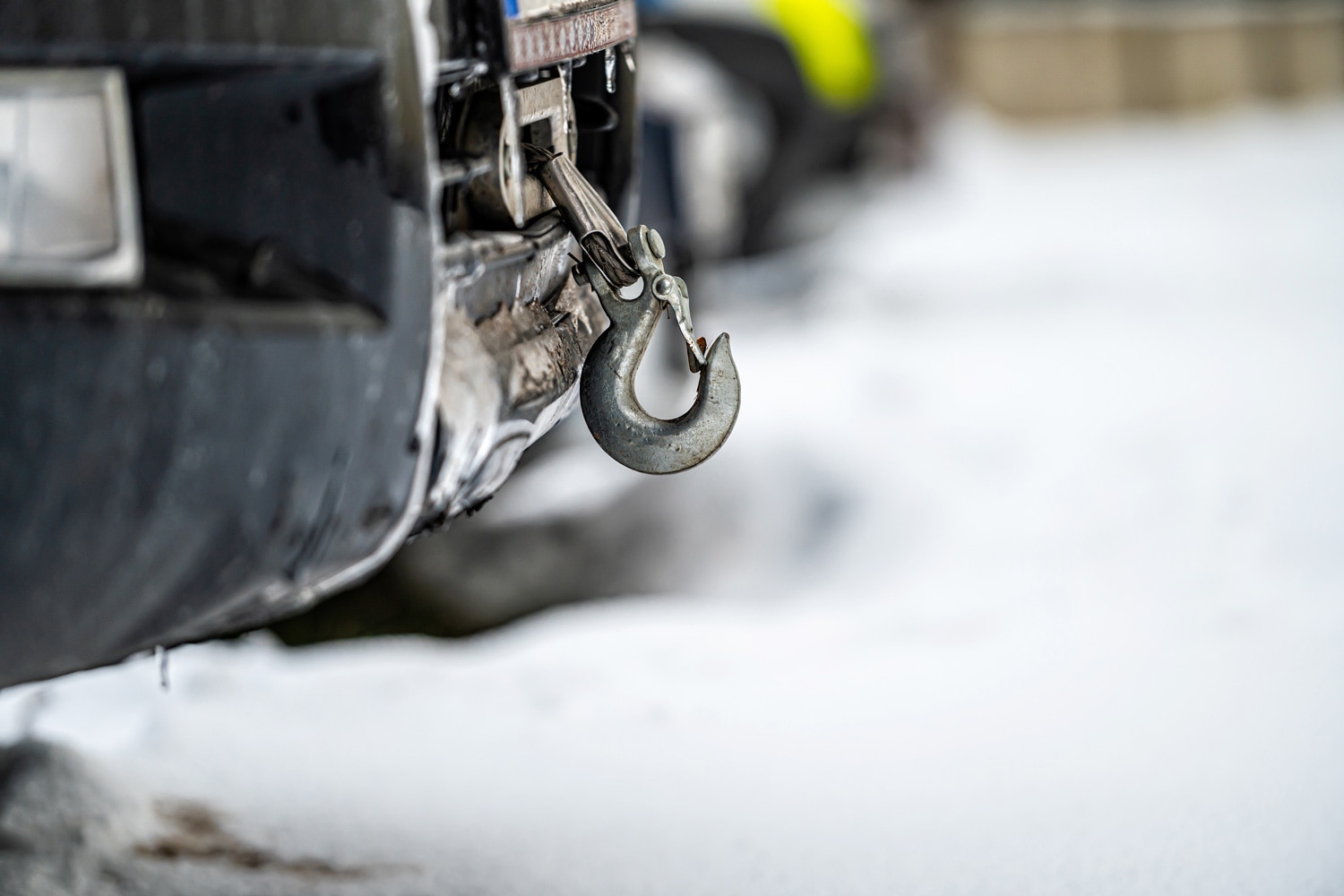What Is a Winch, and How Do You Use It Safely?
How to choose the right winch for your specific needs.
 Shutterstock
Shutterstock
Whether you're looking at a tricky off-road recovery or need to pull a broken-down vehicle onto a trailer, a winch is one of the most trusted tools for making a bad situation better. Knowing the right winch to buy for your needs — and how to use it safely — can add an extra dimension of practicality to your truck, trailer, or SUV.
What Is a Winch?
A winch is a rotating spool, driven by a motor, that can tighten or loosen a cable. The cable generally has a hook at the end. Typically, a winch is attached to the front or rear bumper of a vehicle, although it can also sit at the front of a trailer. The primary function of a winch is to leverage that cable tension to pull a vehicle out of a difficult situation — whether it's stuck in mud, water, facing a steep incline, or unable to move under its own power.
How To Use a Winch
There are two general types of winching:
- Self-recovery: the vehicle with the winch is pulling itself
- Recovering another vehicle: the winch is used to move a second vehicle
Self-recovery relies on an external anchor point for the winch’s hook. The winch’s motor adds tension to the cable, tugging the stuck vehicle to safety. Recovering another car or truck means that the winch-equipped vehicle is itself the anchor point. It relies on its own traction as tension is introduced to the cable to reel in the second vehicle.
It's important to attach the winch to a structural point on the stuck automobile — not a bumper — to ensure a safe connection. Other key safety tips include not standing between the winch and its attachment point while it is in operation (in case the cable snaps or the vehicle moves unexpectedly), and making sure never to grab the cable barehanded, as it could become frayed or heat up, potentially causing injury.
When in doubt, consult the owner’s manual provided by the winch manufacturer, which may be available online in PDF form.
What to Look for When Buying a Winch
The larger a winch's capacity (which is measured in thousands of pounds), the less chance that it will become overworked or damaged when in use. Buying the most powerful winch you can afford is a good way to avoid overloading your unit, especially if you need to recover a heavy full-size truck or SUV. Other concerns when buying a winch include choosing between steel and synthetic cable (the latter is lighter and less likely to snap), and between electric and hydraulic motors. Electric winches are simpler to install but can pull a lot of power from a vehicle's electrical system. Hydraulic designs rely on the power steering pump but come with more complex installation and space requirements.
The biggest names in winch design include Warn, Champion, Superwinch, and Smittybilt.
Written by humans.
Edited by humans.
 Benjamin Hunting
Benjamin HuntingNearly two decades into his career as an automotive journalist, Benjamin has had his hands greasy, his hair blown back, and his heart broken by more than one project car. In addition to his work at Capital One, he has contributed features and reviews to Motor Trend, Car and Driver, Hagerty, Driving Line, Inside Hook, Super Street, European Car, Roadkill Magazine, Motor 1, The Drive, the Toronto Star, the National Post, Business Insider, NAPA, Autoblog, Automotive News Canada, and AutoGuide. He is also cohost of the Unnamed Automotive Podcast and cocreator of the Code 45 and Dead Air graphic novels. In his spare time, he's a friend to vinyl and enjoys keeping the shiny side up during track days.
Related articles
View more related articles